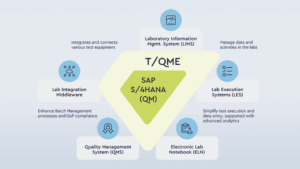In 2017 we were the only insurer and investor to be invited to address the
Call to Action Conference on Antimicrobial Resistance, convened by Dame Sally Davies, then the UK’s Chief Medical Officer, the UN Foundation and UK Government and at the invitation of the Wellcome Trust.
We also made it a central tenant of both our flagship client conferences in 2017. At the 2018 EAT Forum the Aviva plc Chief Executive gave a keynote on sustainable agriculture and launched a report that identified AMR as a blind spot for investors.
Why is AMR a blind spot for investors?
Large investors are, on the whole, not familiar with the issues and implications of AMR in the same way they are on more established environmental, social and governance topics such as climate change, executive pay and modern-day slavery.
A key aspect underpinning this lack of awareness is the presence of a market failure. Economists use the term ‘market failure’ to describe situations where supply and demand do not come together to efficiently or effectively to allocate a good or service. The market failures in the case of AMR are a) externalities and b) an unwillingness to pay for public goods.
An externality is the cost or benefit to a third party for a decision over which they have no say. For instance, if a factory pollutes a river, it may save money, but everyone who relies on the river downstream suffers. Antibiotic consumption is similar – patients may benefit from taking antibiotics, but the resistance which flows from taking antibiotics impacts upon all of society.
At the moment the negative externalities of antibiotic consumption are not regulated strongly and that has led to their overuse in patients and animals. This is made worse by the fact that antibiotics are often cheap.
Public goods are things that benefit a wide group of people, where that group does not directly pay for their production. For instance, a lighthouse, which benefits ships sailing at night, but where the running costs are not paid for directly by the ship owners. Similarly, a significant majority of the medical industry relies on the ability to manage infections with antibiotics to sell their products.
The current landscape for investor action on AMR
In 2019 Aviva Investors kindly sponsored me to undertake a masters at the University of Cambridge focusing on two key aspects of this article; a) Do investors have an interest in taking action: and b) What, if anything, can investors do to help the problem.
After interviewing investors across Europe, it was concluded that, as things stand;
- Neither companies nor investors have a compelling business case for investing in AMR R&D due to the market failures inherent in antibiotic economics. .
- AMR is a market failure that needs a public policy intervention. Therefore, Governments have the primary power to remedy the issue.
To encourage attention and action from investors, we need the production of a report to plug the gap between the macroeconomic outlooks of the UK Governments AMR Review, by Jim O’Neill and investee company and sector specific implications. Such a report could draw inspiration from what the literature tells us on what makes investors care about issues as a starting point and include opportunities around solutions e.g. phage therapies.
Essentially this report would translate the O’Neill Review into a report to drive investor buy-in by:
- exploring the impact on investment performance and portfolio risk;
- articulating materiality, for instance in the veterinary pharmaceutical sector;
- highlighting case studies of companies who have significant costs and benefits;
- demonstrating the reliance of the investor topic du jour, oncology, on effective antibiotics
- detailing the regulations appearing internationally including potential impacts and timeframes.
The recently announced AMR Action Fund is very welcome indeed. However, there is a real need to explore what mechanisms need to be in place to get large institutional investors interested in the commercialisation funding for the new antimicrobials which flow from the fund. Awareness of AMR is the first step down this path.
Tools developed to help investors understand and take action on AMR
The AMR Benchmark
The Access to Medicine Foundation – an independent non-profit organisation that works with a range of stakeholders, including more than 100 institutional investors on a range of material access-to-medicine topics – publishes the AMR Benchmark every two years. Most recently published in January 2020, the AMR Benchmark is a first-of-its-kind publication to evaluate how 30 of the most important players in the antibiotic market are addressing rising resistance and the global need for appropriate access to antibiotics. It focuses on areas where companies have the most potential and responsibility to limit AMR, such as R&D, managing manufacturing waste and ensuring appropriate access and stewardship.
The 2020 Benchmark found signs of improvement in how companies are tackling AMR. With an increase in disclosure, especially among generic medicines manufacturers, it is evident that more companies are taking steps to ensure that medicines are promoted responsibly by implementing policies that reduce the risk of overselling to healthcare practitioners. Moreover, companies are also sharing the data and results of their surveillance programmes on the spread of resistance and the effectiveness of their medicines. However, there is a lack of progress in providing access to antibiotics where the need is greatest, with companies not widely registering new antibiotics nor supplying older yet clinically useful antibiotics.
The benchmark aims to encourage pharmaceutical companies to develop new medicines to replace the ones that no longer work, to ensure they are available and accessible to those who need them and to ensure all antibiotics are produced and promoted responsibly. Investors have a vital role to play in driving and incentivising this progress. One of the main drivers of AMR is the inappropriate use of antibiotics, signalling companies to remove incentives for their staff to oversell these medicines by decoupling bonuses from sales volumes. In addition to ensuring appropriate access and stewardship of antibiotics on the market, monitoring for responsible manufacturing processes through the publishing of antibacterial discharge levels, audit results and supplier accountability will all be priority in the decade to come.
Investor Action on AMR initiative
A coalition of public and private sector organisations has launched an initiative to galvanise investors to tackle the issue of AMR. The
‘Investor Action on AMR’ initiative is backed by the UN-Supported Principles for Responsible Investment (PRI), FAIRR, the Access to Medicine Foundation and the UK Department of Health and Social Care.
The current COVID-19 pandemic has not only demonstrated the significant impacts that human health risks have on economies and societies worldwide, but also the importance of investing in preventative healthcare including safeguarding our ability to treat infectious diseases with existing antibiotics. To safeguard society, economies, and the long-term value of investment portfolios, we are encouraging investors to formally assess and integrate AMR risks, opportunities and impacts using a holistic and multisectoral ‘One Health’ approach.
The main objective of initiative is to leverage investor influence to make change happen. The financial sector sits at the top of the investment chain and can positively change behaviour if it aligns with international standards and guidelines such as the WHO Global Action Plan on antimicrobial resistance. Investors will be encouraged to assess and integrate risks, opportunities and impacts through an ‘AMR lens’ i.e. considering antimicrobial resistance when making decisions and engaging with investees.



 Tenthpin
Tenthpin Adobe stock photos - Matthew
Adobe stock photos - Matthew  Parse Biosciences
Parse Biosciences